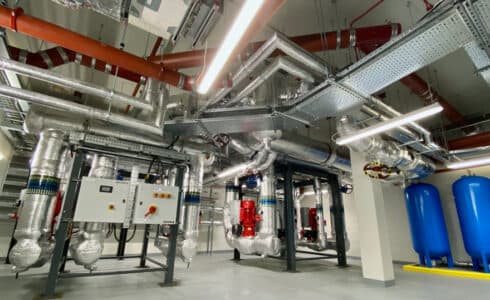Frequently Asked Questions
What is the difference between ISO and GMP cleanroom standards?
ISO 14644 standards focus on air cleanliness levels and particle counts, while GMP guidelines emphasise maintaining specific levels of air purity, temperature, humidity, differential pressure, and airflow to prevent contamination.
What are the cleanliness levels specified by ISO and GMP?
ISO 14644 standards classify cleanrooms from ISO 9 to ISO 1 based on particle count. GMP guidelines specify two distinct cleanliness levels: ‘at rest’ (unoccupied) and ‘in operation’ (occupied with processes underway).
How does GMP impact cleanroom design?
GMP guidelines require cleanrooms to have smooth, waterproof, easy-to-clean, and rigid internal surfaces to minimise contamination risks. They also mandate rigorous control of environmental parameters like air purity, temperature, and humidity.
What is the role of cGMP in modern cleanrooms?
cGMP (current Good Manufacturing Practices) involves using up-to-date technologies and systems to comply with GMP standards, ensuring that cleanrooms maintain the highest level of contamination control and product quality.
What are the key requirements for cleanroom qualification under GMP?
Cleanroom qualification under GMP involves verifying that the cleanroom can maintain the required levels of contamination control. This includes using GMP-grade materials and adhering to stringent regulatory standards.
How do regulatory bodies like the FDA influence cleanroom standards?
Regulatory bodies like the FDA, along with ISO and GMP guidelines, set stringent standards for cleanroom design, operation, and monitoring to ensure product safety and quality.



